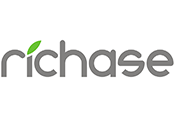Key Roles of Zinc Sulfate in Animal Feed: A Comprehensive Analysis By:Lina
1.Introduction
In the field of animal nutrition science, zinc has been widely recognized as an essential trace mineral. Zinc sulfate, with its excellent bioavailability, has become an indispensable zinc supplement in modern animal feed formulations. This article systematically elucidates the multifaceted applications of zinc sulfate in livestock and poultry farming.
2.Core Functional Mechanisms
Metabolic Enhancement: Participates in over 300 enzymatic reactions, ensuring protein synthesis and energy metabolism.
Immune Reinforcement: Stimulates lymphocyte proliferation and enhances vaccine efficacy.
Reproductive Optimization: Regulates gonadotropin secretion, improving conception rates and offspring quality.
Structural Integrity: Promotes keratin production for healthy development of fur, feathers, and hooves.
3.Differentiated Application Protocols
Poultry Farming
Broilers: Addition of 80–100 mg/kg improves tibia density by 12–15% and reduces breast cyst incidence.
Layers: Diets containing 60 ppm zinc increase eggshell thickness by 8% and decrease broken egg rates by 3%.
Swine Production
Nursery Piglets: High-zinc regimens (2,000–3,000 ppm zinc oxide equivalent) reduce diarrhea rates by 40%.
Growing-Finishing Pigs: Organic zinc complexes boost feed conversion ratios by 6–8% and decrease backfat thickness by 0.5 cm.
Ruminant Systems
Dairy Cows: Daily supplementation of 500 mg zinc sulfate lowers somatic cell counts by 30% and hoof disorders by 25%.
Feedlot Lambs: Maintaining a Zn:Cu ratio of 4:1 enhances daily weight gain by 150–200 g.
Aquaculture
Crustaceans: Feeds with 50–80 mg/kg zinc shorten molting cycles by 20% and improve survival rates by 18%.
Fish: Organic zinc sources enhance gill stress resistance and reduce heavy metal accumulation by 35%.
4.Scientific Formulation Principles
Baseline Dosage: 30–100 mg/kg for livestock, 50–120 mg/kg for aquaculture.
Antagonism Control: Maintain Zn:Fe ≤ 3:1 and Zn:Cu ≤ 4:1 ratios.
Carrier Selection: Prioritize coated formulations with 90% stability under high-temperature processing.
Toxicity Threshold: Chronic intake exceeding 500 mg/kg disrupts copper/iron metabolism.
Innovative Application Trends
Nano-Zinc Preparations: 2–3× higher bioavailability with 40% reduced dosage.
Sustained-Release Technology: 12-hour slow-release formulations minimize blood zinc fluctuations by 60%.
Smart Monitoring: Implantable zinc-ion sensors enable real-time tissue zinc homeostasis tracking.
if you are interested in our products, you can contact us directly through the mailbox, if necessary, you can also use WhatsApp for quick consultation.
[Platform release disclaimer]




